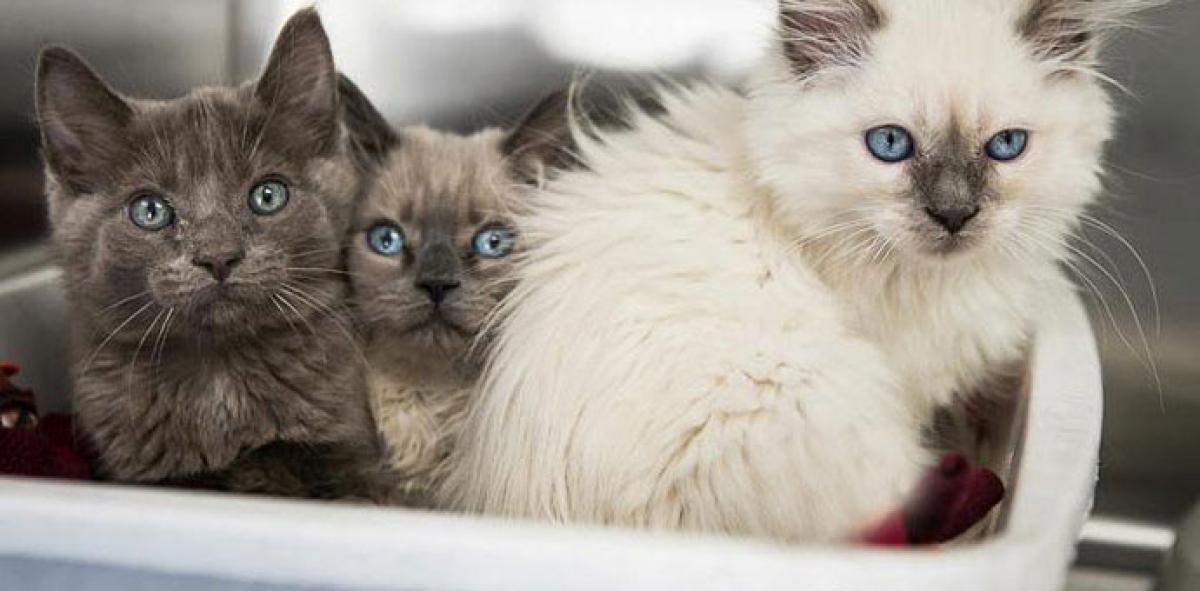Live
- 18 Palestinians killed in Israeli attacks across Gaza
- Grand Durga Mata and Dasara Celebrations in Palem
- Farmers squat on railway tracks, national highways in Punjab over 'tardy' paddy procurement
- Punjab Police book 18 more travel agencies for fraudulent employment opportunities
- Maharashtra in peril, time for people to eject MahaYuti from power: MVA
- HP CM seeks green energy investments from Canadian diaspora
- CM Revanth Stresses Alai Balai’s Role in Preserving Telangana Traditions
- Odisha plans free ‘mahaprasad’ for Puri temple devotees
- UP: Several detained as Mahapanchayat ends in Ghaziabad
- Mallikarjun Kharge's son gives up 'ownership' of land amid MUDA row
Just In

x
Highlights
One needs to ask; how often the street cats are chased by street dogs or they fight with each other. It is often used the phrase that people do fights like dog and cat. Do they really fight - the cats and dogs? Does the fight between the two animals that live in human habitation send any such management message to the corporate?
One needs to ask; how often the street cats are chased by street dogs or they fight with each other. It is often used the phrase that people do fights like dog and cat. Do they really fight - the cats and dogs? Does the fight between the two animals that live in human habitation send any such management message to the corporate?
.jpg)
Learning is possible even from the fight between different animals in nature if the corporate HR has openness to listen and learn. The insight will not be useful just for the learning per se, but it will also help the HR in managing different people in the corporate.
In most instances, cats get scared of dogs and runaway especially when they see dogs. Dogs do chase cats whenever they see them. One needs to go beyond this well known behaviour of dogs and cats and must understand the deeper meaning.
Assume a situation where the fight is happening between a dog and cat. Usually the courage shown by the dog while chasing the cat, disappears when it go near the cat. Whereas the cat that get scared when find no scope to save its life will never be the same coward animal.
The cat becomes ferocious and aggressive. In most instances, cat may win and may also cause serious injuries to dog. Why dogs fail to win over cats in most instances? Dogs are in general team players. In general, dogs know to ‘fight’ only as team.
When it is a fight between a single dog versus a single cat, cat easily wins despite the dog being strong and big. Cats in general are individual performers and rarely only they work as team. A team performer only rarely wins when one demands solo performance from them. It is not about strength or capability but about the instinct. This superb management message only the fight between a dog and cat conveys to the corporate.
Understand the team performers and individual performers and position them accordingly in the corporate ecosystem. Never push the solo performers beyond a point to perform in a team. So too, never isolate team performers and ask them to perform as individuals.
When this essential is not well understood by the corporate, instead of creating harmony and excellent opportunity for people to perform, fight would only occur among people. HR needs to develop smartness in knowing the ‘people behaviour’ in order to make necessary adjustments in the corporate for people with different instincts to perform and excel.
Unfortunately the HR and leaders in most corporate in general does not use such understanding. They often push team performers to perform as an individuals and solo performers to work in a difficult team. Although everyone in the corporate need to work both as individual and in team, the definition of ‘team’ or ‘individual’ performer should be understood only from the major/dominant operating zone of people.
This means, the team performers should be given more opportunity to perform in teams and similarly the solo performance should be encouraged as far as possible sole performance.
This ‘ordinate’ arrangement will help the organization to tap not only the best performance but the total performance potential of people.
Dr S Ranganathan
More On

Next Story
More Stories
ADVERTISEMENT
© 2024 Hyderabad Media House Limited/The Hans India. All rights reserved. Powered by hocalwire.com







